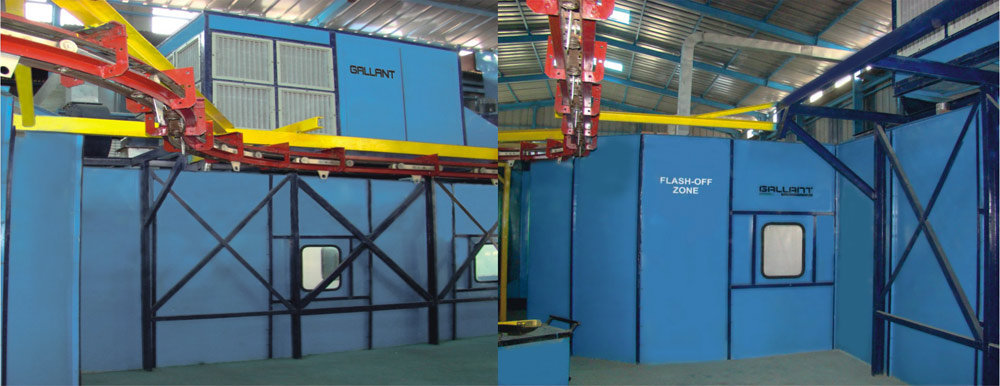The quality of the paint is very important in manufacturing, especially in the appliance, car, and metal fabrication industries, because it affects how well the product resists corrosion, how long it lasts, and how happy the customers are. A bad coating can cause something to break too soon, need expensive repairs, or hurt the business. Cathodic Electrodeposition (CED) technology is a new way to paint, and it uses electricity to paint metal parts, making a smooth, corrosion-resistant coating. Updating and improving the way CED plants are set up can make paint quality much better, cut down on waste, and make production more efficient.
Understanding CED Technology
Using an electric current, CED applies a primer layer to metal surfaces, drawing in positively charged paint particles that stick to the surface. This makes a very even coating, even in places that are hard to reach. It has many benefits over traditional painting techniques, such as being resistant to corrosion, having an even coating thickness across complex shapes, being safe for the environment, being very good at transfer efficiency, and being able to be scaled up and automated. A pre-treatment section, a CED tank with electrodes, rectifiers, ultrafiltration units, post-rinse and drying ovens, and automation and control systems are some of the most important parts of a CED system.
Factors Affecting Paint Quality in CED
For security, coating thickness and uniformity are very important since films that aren't the same thickness can rust or peel. Adhesion qualities need the surface to be properly prepared and the current density to be right. CED coatings make a continuous film that keeps water and harmful substances out of internal spaces. It's also important that the gloss level and colour uniformity look good, especially when topcoating. A Liquid Painting Plant offers precise and uniform coating solutions for complex surfaces. It ensures high-quality finishes in industrial applications.
Importance of Plant Setup in CED
Layout of a plant is very important for operational effectiveness because it cuts down on the amount of work that needs to be done and the risk of contamination. Choosing the right equipment, like high-quality tanks and filtration units, keeps the process factors stable. On the other hand, using low-quality equipment can cause paint or coatings to wear unevenly or break down. Environmental controls, like the right temperature and humidity for the tank, also have a direct effect on the quality of the coating, stopping flaws and improving bonding while it cures.
Optimizing Equipment for Better Paint Quality
Choose high-quality electrodeposition equipment that is made of stainless steel or material that won't rust and has accurate rectifiers, automatic current control, and advanced systems for mixing and moving the material around. System stability is ensured by regular repair and calibration. New developments in electrodeposition technology, like automated tracking systems, AI-based process optimization tools, pulse CED technology for better coating control, and smart tanks for changing chemical doses in real-time, make the process more effective.
Process Control and Monitoring
For CED processes to produce high-quality results, real-time tracking is very important. Important things to keep an eye on are the voltage, current density, bath temperature, pH, paint bath solid content, and the cleanliness of the material before immersion. Closed-loop systems change dosing and agitation on their own based on constant sensor input. This keeps the quality of the coating stable over time.
Training and Skill Development
Skilled workers are important for CED operations because they can fix problems, improve performance, and keep mistakes from costing a lot of money. Operators and technicians get training that includes getting certified at the start, continuing training in upkeep and troubleshooting, and workshops on new technologies and legal requirements. Strong SOPs and accountability help people have a quality-first attitude, which leads to fewer mistakes and better operational efficiency.
Case Studies of Successful CED Plant Setups
CED bath agitation and inline monitoring have helped companies improve the quality of their paint. The changes made the first-pass yield go up, customer issues went down, and ROI went up. Some things that can be learnt from these case studies are to put money into automation and training for staff, to focus on constant monitoring, and to understand that quality is a plant-wide goal, not just a technical one.
Future Trends in CED Technology
Green coatings, hybrid E-coat/topcoat systems, IoT and cloud data, and smarter systems are some of the new technologies being used in CED. In the future, AI is expected to get better and be used more in smaller businesses. Sustainability is a big part of CED progress. New developments in a CED painting plant include ovens that use less energy, lower volatile organic compounds, and nanotechnology screens that make baths last longer.
Final Thoughts
Setting up a CED plant correctly is very important for paint quality because it impacts how well the finishing process works as a whole. Investing in better CED systems not only makes coatings better but also builds brand trust, cuts down on repair costs, and makes operations more flexible for the future. Now, manufacturers need to look at how their present CED systems work, find the slow spots, and spend money on better tools, training, and monitoring systems to make the quality of their products better and make customers happier.





Comments